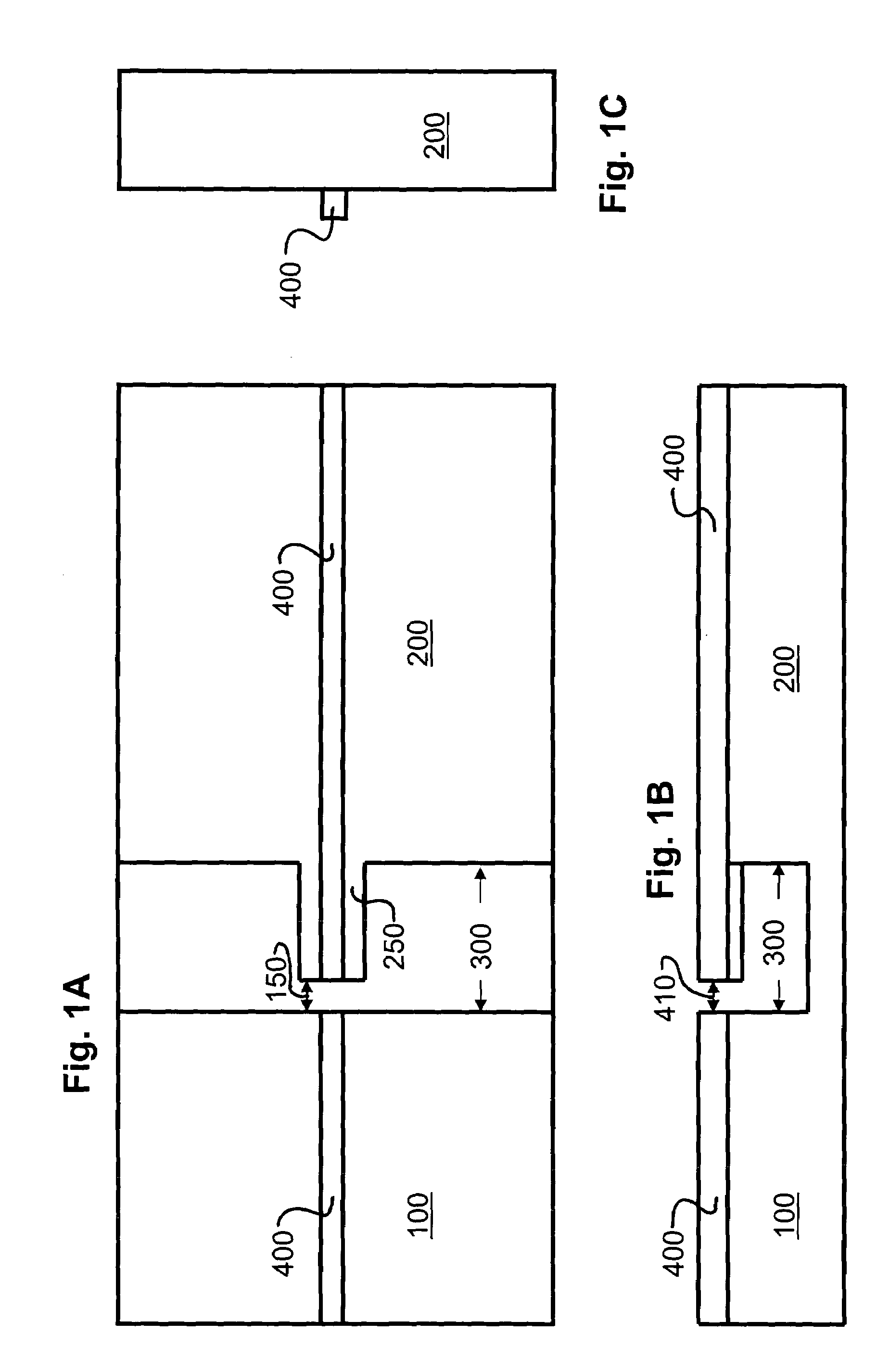Molecular detection using an optical waveguide fixed to a cantilever
a cantilever and optical waveguide technology, applied in the field of detecting molecules, can solve the problems of difficult or impossible to perform many known molecular detection techniques, limited molecular detection techniques, and difficulty in isolating molecules, so as to facilitate the immobilization of receptors, enhance bonding, and improve light transmission through the waveguide
- Summary
- Abstract
- Description
- Claims
- Application Information
AI Technical Summary
Benefits of technology
Problems solved by technology
Method used
Image
Examples
examples
[0096]The invention is now described with reference to the following Examples. These Examples are provided for the purpose of illustration only, and the invention is not limited to these Examples, but rather encompasses all variations which are evident as a result of the teaching provided herein.
[0097]Fabrication of a Multiple Cantilever Detector
[0098]This example describes how a detector described herein can be fabricated.
[0099]A double-sided polished silicon wafer having a substantially uniform thickness of about 250 micrometers is used as a substrate. The silicon substrate is immersed in a boiling 6:1:1 mixture of distilled, de-ionized water (DDW):ammonium hydroxide:hydrogen peroxide. After rinsing, the substrate is immersed in a boiling bath of a 6:1:1 mixture of DDW:hydrochloric acid:hydrogen peroxide in order to clean the surface thereof. After rinsing with DDW, the wafer is immersed in concentrated hydrofluoric acid for 5 minutes. The wafer is rinsed again with a copious amou...
PUM
| Property | Measurement | Unit |
|---|---|---|
| angle | aaaaa | aaaaa |
| angle | aaaaa | aaaaa |
| angle | aaaaa | aaaaa |
Abstract
Description
Claims
Application Information
 Login to View More
Login to View More - R&D
- Intellectual Property
- Life Sciences
- Materials
- Tech Scout
- Unparalleled Data Quality
- Higher Quality Content
- 60% Fewer Hallucinations
Browse by: Latest US Patents, China's latest patents, Technical Efficacy Thesaurus, Application Domain, Technology Topic, Popular Technical Reports.
© 2025 PatSnap. All rights reserved.Legal|Privacy policy|Modern Slavery Act Transparency Statement|Sitemap|About US| Contact US: help@patsnap.com


